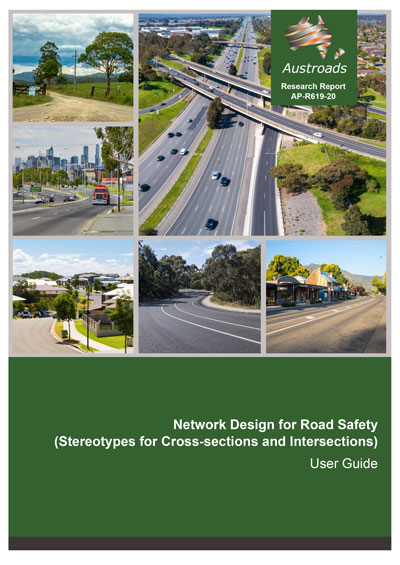Tuesday, 19 May 2020

Austroads has produced a user guide to help road managers, planners and designers develop sustainable network safety plans that reduce serious and fatal crashes, deliver ‘self-explaining roads’ and facilitate decisions resulting in the safest network.
“Road safety treatments are predominantly considered on a project by project basis which may not result in the safest network with consistent corridor outcomes”, said David Bobbermen, Austroads Road Safety and Design Program Manager. “Inconsistent corridor standards do not support the principle of a ‘self-explaining road’ and make it difficult for drivers to make decisions and match driving behaviour to the road environment.”
“We’ve developed a simple five-step process that applies to all roads across a network, includes contemporary safety treatments and can be matched to available and aspirational levels of funding. This process will support road authority officers who are relatively time-poor.”
“The project working group divided the types of road on a network ranging from motorways to local access roads into 13 road stereotypes,” said Richard Fanning, project manager from the Austroads Road Design Task Force. “For each road stereotype, the group developed options by combining cross-sections and safety treatments for varying speed limits to show opportunities to improve road safety.”
Each option shows the reduction in crash risk calculated using the Australian National Risk Assessment Model (ANRAM), and improvements in star rating as set globally via the International Road Assessment Program (iRAP).
Intersection tables were also developed for major cross ‘and ‘T’ junctions for each road stereotype with 13 intersection treatment options available. The indicative crash risk for each intersection treatment has also been provided.
“The five-step process is backed by three case studies to demonstrate how to assign stereotypes to roads and intersections and prepare network‑wide safety plans,” said Richard.
The process, supported by the information in the reports, is:
- Find the appropriate road stereotype based on the road function, geometric characteristics and traffic volume. Identify the existing cross-section for the asset from the relevant cross-section table and establish the fatal and serious injury (FSI) crash risk and iRAP star rating.
- Select suitable road cross-section treatments and standards that can be applied.
- Using the cross-section tables, find the FSI crash risk for the proposed treatment and compare predicted outcomes for the existing asset and the treatment.
- Find and compare the corresponding iRAP star ratings for the proposed treatment and the existing asset.
- Calculate the crash risk benefit (reduction in fatalities and serious injuries) and the cost of the corridor treatment and match these to the available funding, considering the total network.
“Our guidance provides a simple process to support all local government agencies, and will help road authorities to meet commitments made under the Australian National Road Safety Action Plan 2018–2020 to assess road safety treatments across their networks and apply Safe System approaches to all programs,” said David. “This innovative practice now places the complex intelligence of road safety tools into the hands of every practitioner – certainly an Australian first, if not a world first.“
Austroads will soon deliver a webinar to assist users to understand this simple new approach. As the use of this guideline increases, the process will be updated to reflect improvements and suggestions from practitioners and develop more stereotypes to assist jurisdictions in their decision making. For more information please contact austroads@austroads.com.au.
Download:
Network Design for Road Safety (Stereotypes for Cross-sections and Intersections): User Guide
Road Cross-section Design for Road Stereotypes (including Network Safety Plans) and a Safe System (Research Report)
